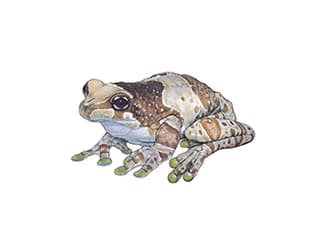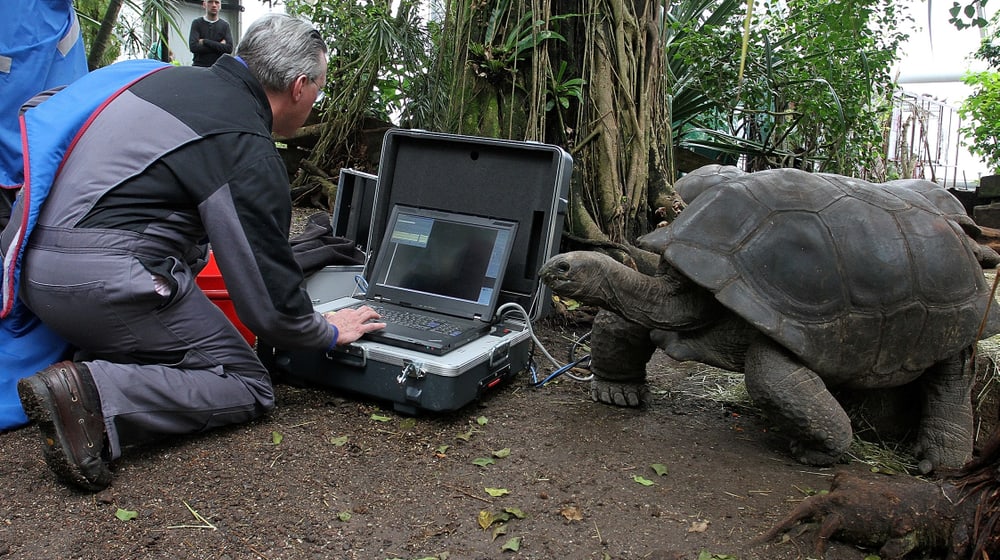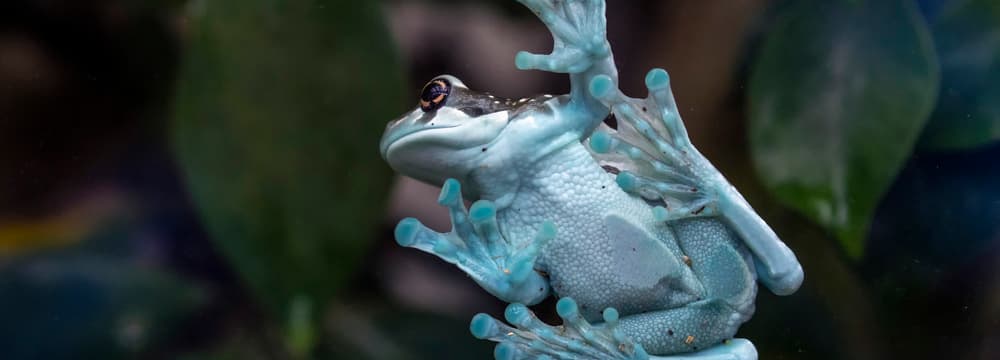
Deciphering blue bones
The bones of the Amazon milk frog are turquoise blue. A research team is currently investigating exactly how they are constructed and what use they are to the frog. Our video shows the process.
The Amazon milk frog's bones are truly special: they are turquoise blue. This unusual bone color has sparked the interest of scientists. In our video, we accompany researchers as they are investigating the details of the special bones.
Video: Zoo Zurich, Nicole Schnyder, ARTORG Center
The frog used in this video is a specimen from Zoo Zurich. It died of natural causes. Preserved in formalin, the frog embarks on a little «Tour de Suisse» in the service of research.
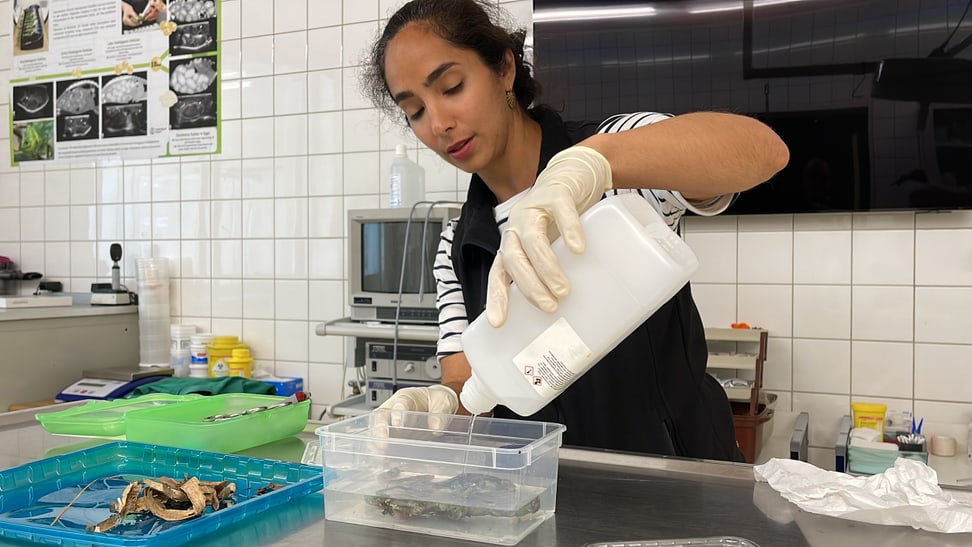
Curator Dr. Leyla Davis preserves the dead frog in formalin. Photo: Zoo Zurich, Nicole Schnyder
computed tomography reveals details
The first stage on its itinerary took the frog to the Artorg Center for Biomedical Engineering Research at the University of Bern. Researchers there recorded the amphibian's anatomy in detail using computed tomography.
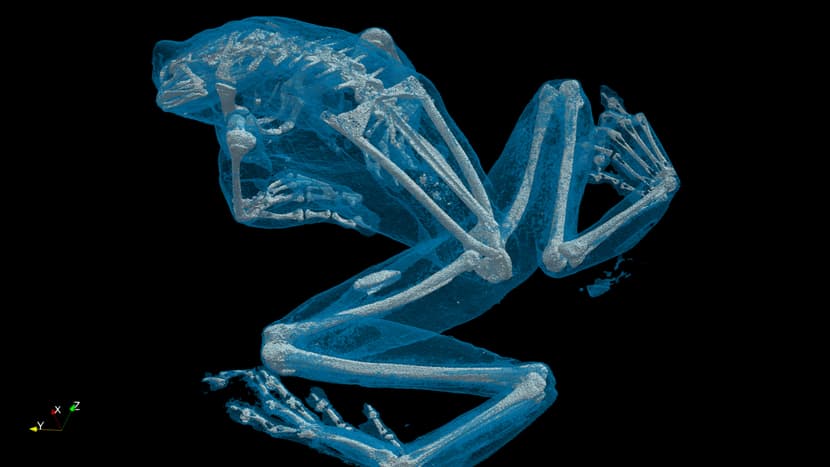
The computed tomography scanner provides a detailed image of the Amazon milk frog's anatomy. Image: ARTORG Center
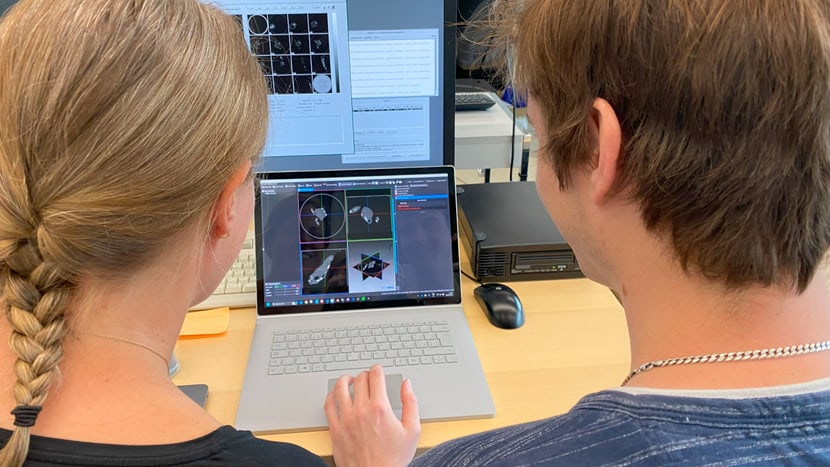
At the ARTORG Center, the research team analyzes the data from the computed tomography scanner. Photo: ARTORG Center
Taking a look inside
From Bern, the frog traveled back to Zoo Zurich. At the zoo's veterinary station, a pathologist from the University of Zurich dissected the dead animal, focusing on the leg and the turquoise bones inside. The project-leading researchers from the Paul Scherrer Institute and EPFL documented the process in detail.
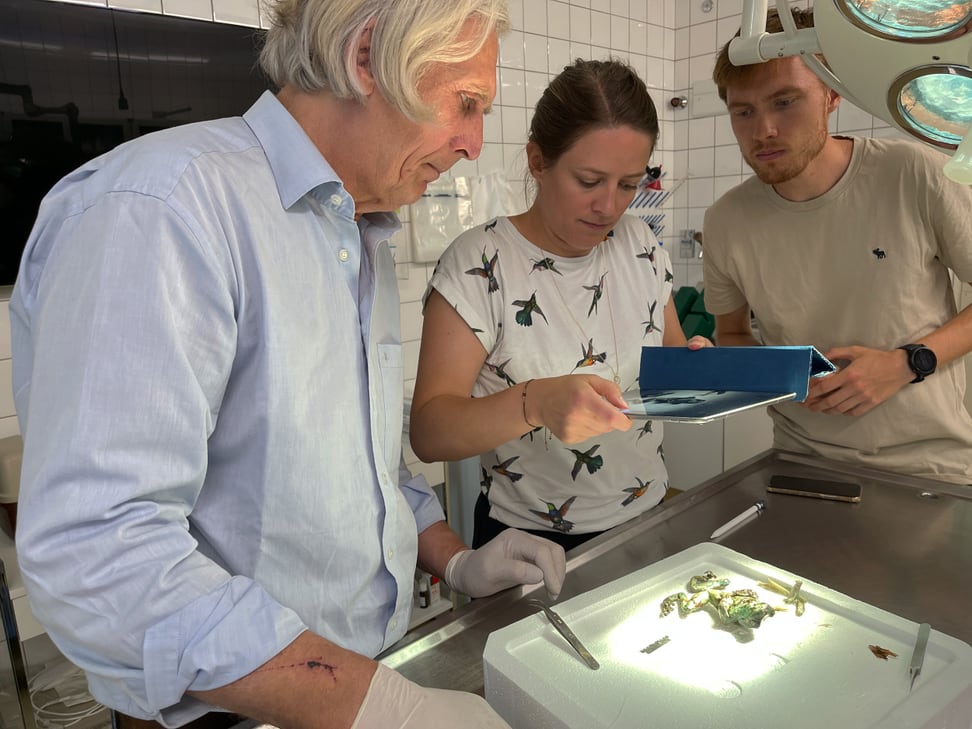
Back at the zoo, pathologist Dr. Udo Hetzel (University of Zurich) and Prof. Marianne Liebi and Torne Tänzer (Paul Scherrer Institute/EPFL) take a close look at the dead frog. Photo: Zoo Zurich, Nicole Schnyder
The next stage will take the frog to the Paul Scherrer Institute. There, researchers will further analyze the leg bones with synchrotron light and study the nanostructure of the bone matter.
Where from and what for?
Researchers already know that the unusual bone color of the Amazon milk frog is due to an accumulation of «biliverdin» – a pigment produced during the breakdown of red blood cells. What's more complex to decipher is the question of how exactly it benefits the frog to have these blue bones. In order to find a conclusive answer to this question, several follow-up studies will be necessary in addition to the current study.
